Festivals and events on the Costa Brava
January
Shrine Festivals (romerías) Pla de L'Estany, second fortnight.
As gatherings which fulfil the double purpose of devotion and entertainment, the romerías or aplecs are always held in hermitages and require a certain amount of travel on the part of the participants.
The festival of Sant Mer, held in Vilademuls in the heart of winter, attracts over ten thousand people in a tradition which dates back to the 16th century.
THE PILGRIMS VOW. Tossa de Mar (Selva), January 20th and 21st.
During the 15th century, when a plague devastated a number of coastal towns, the inhabitants of Tossa promised to send a pilgrim every year to the hermitage of Sant Sebastià, in the town of Santa Coloma de Farners, to give thanks for having driven the epidemic away. The vow has been kept for over five hundred years. The chosen pilgrim, garbed in a short cape decorated with seashells, travels the forty kilometres which separate the two towns in total silence, accompanied by approximately one thousand people. The walk lasts a whole day, with the procession arriving at Santa Coloma by sundown. Next morning the entourage sets out for the return trip and, back in Tossa, the pilgrim is met by a procession which marches alongside the town's torch lit ramparts.
February
Carnival Castell-Platja d'Aro y Palamós (Baix Empordà)
The penitential threat of Lent is the cause of the endurance of another, even more ancient tradition: the period of unrestrained merrymaking and subversion of customs known as the Carnival or Carnestoltes, whose origins may be traced back to the Saturnalian rites of Roman times. Having overcome the prohibitions of the dictatorship, many towns have reinstated their carnivals and created crews, processions and bands which take part in the parade of floats through their streets. The carnival of Platja d'Aro is the third most important in Spain, after the ones in Cádiz and Tenerife. Palamós also stands out for the spectacularity of its Carnestoltes, which boasts a long-standing tradition.
HONEY FAIR
Crespià (Pla de l'Estany), second fortnight of February.
Every year Crespià pays homage to honey, a nourishing and energy-providing substance mythically associated with gold. The town's two hundred inhabitants spend many months preparing for this event, held on a single Sunday, thus continuing a tradition with roots in the Middle Ages. Visitors purchase honey and doughnuts made according to age-old recipes.
POPULAR MEALS
Carnival in Verges (Baix Empordà) y Vidreres (Selva).
All festivals have their own meals in the open air, but some are more popular than others and become festivals. Such is the case with the Sopa de Verges and the Ranxo de Vidreres, in which the townspeople provide the goods and serve them hot in the town squares at lunchtime. Or the Suquet in Roses, a dish made with fish and potatoes which the fishermen prepare by the sea. Or the Fish Rice dished out at the Sant Sebastià Lighthouse. Or the Cuina de ses dones (Women's Fare), a compendium of local gastronomy prepared by the housewives of Cadaqués.
THE CANDLE AND TORTELL DANCES. Esponellà (Pla de l'Estany), February 2nd.
In Esponellà, for the Candlemas Festival a very simple dance takes place, consisting of circling around the square with the constable at the head of the procession. The pabordeses, who number three in representation of the town's three districts, carry bouquets of flowers and carry a ring-shaped cake over their arms.
March
40-KILOMETRE WALK. Banyoles (Pla de l'Estany), first fortnight of March.
The Centre Excursionista de Banyoles has organised this event since 1963. During its first two years the distance was set at 80 km., which proved to be excessive for the majority of the participants; therefore, in 1965, the distance was cut in half. After several euphoric years, which culminated in the participation of 9,000 hikers in 1980, the number of persons entering each year has stabilised around 2,000, with no distinction in terms of age or sex. The sole object of the event is to enjoy walking: as there is no competition involved, nobody is in a hurry. People often take breaks to recover their strength and to survey the beautiful scenery along the way.
RALLY CATALUNYA-COSTA BRAVA. Girona-Costa Brava (Gironès, Selva, Alt Empordà, Baix Empordà), march.
Automobile races have become popular events. The most important rally of all is the Rally Catalunya-Costa Brava which has grown to the point that it is now included in the World Championship circuit. It has a considerable number of participants and attracts large crowds, which, far from sitting comfortably in one place, walk hundreds of yards to find the best view. The long wait in these improvised campgrounds is rewarded by the fleeting - albeit noisy - appearance of the vehicles, emblems of the speed which has become a sign of the times.
April
POPULAR MEALS
Cadaqués (Alt Empordà), second fortnight of April.
All festivals have their meals in the open air known as àpats, but some acquire their own character and become festivals in and of themselves like the Cuina de ses dones (Women's Fare), a compendium of local gastronomy prepared by the housewives of Cadaqués with local produce.
HOLY WEEK PROCESSIONS
Besalú (Garrotxa), Palm Friday.
The procession of Besalú, which dates back to the 18th century, alternates images with live biblical figures. Jesus and the Apostles, converted into a chorus, sing a unique hymn from the 19th century in the town square.
Verges (Baix Empordà), Maundy Thursday.
The procession of Verges has two parts. The first recalls the Passion of Christ with archaic verses. The second, parading through the town's streets, has a surprising element: five skeletons who interpret the Dance of Death.
Girona (Gironès), Good Friday.
The procession of Girona starts at the Cathedral and winds through the city's old quarter preceded by manaies who faithfully reproduce the Roman militia of imperial times. The climax is the singing of the Creed at the steps of the Cathedral.
LIVING VIA CRUCIS
Sant Hilari Sacalm (Selva), Good Friday.
The Living Via Crucis at Sant Hilari Sacalm dates at least back to 1731, and has its roots in an Easter Game played in the Middle Ages in commemoration of the Resurrection of Jesus Christ.
THE DANCE OF THE CUCKOLD
Cornellà de Terri (Pla de l'Estany), Easter Monday.
This dance takes place around May. The Cuckold, the main character around whom six couples dance, dons two twisted horns and makes his entry in the square on a cart decorated with branches.
May
WOOL AND COUNTRY-STYLE WEDDING FESTIVAL
Ripoll (Ripollès), first fortnight of May.
Each year in Ripoll the most important time in a shepherd's life is relived in a folkloric hue: shearing time, the period in which the wool of goats and sheep is gathered. Shepherds and shepherds' apprentices shear the flocks in full view of the public and, with the first wool, make a mattress for a double bed. Hence the connection with the Casament a Pagès, the old-fashioned wedding held, whenever possible, with a real bride and groom. Relatives and unmarried townsmen fetch the bride-to-be at her home and accompany her through the streets on horseback to the church, where the groom awaits her arrival. The wedding ceremony takes place and, afterwards, the wedding banquet is held in the main square.
FLOWER CONTEST-SHOW
Girona (Gironès), second fortnight of May.
This show organised in Girona by the Friends of the Flowers Association goes beyond a simple eye-catching exhibition; set in some of the city's great monuments where stone and flowers mutually complement each other, reinforced by combinations of light and water and the addition of paintings, sculptures and music. What began modestly thirty years ago has become a popular event and a prodigious show of sensitivity.
June
NIGHT OF THE MUSICIANS OF CASSÀ
Cassà de la Selva (Gironès), first fortnight of June.
Cassà de la Selva is the Catalonian town with the highest number of cobla (band playing typical Catalan instruments) musicians per capita, and the Associació Amics de la Sardana brings them all together on the Night of the Musicians of Cassà.
July
FIREWORKS CONTEST
Blanes (Selva), second fortnight of July.
Blanes has achieved international prestige with its fireworks contest, which is deemed among the most important of its kind in the entire world and is held over three nights during the Santa Anna festival. Over five hundred kilograms of fireworks are catapulted skyward in the summer's best show of light and colour. The Costa Brava International Fireworks Contest and Vila de Blanes Trophy bring together the most renowned rival pyrotechnics firms. The jury determines the winner taking into account colour, rhythm, originality, noise, the play with the design of forms and crowd approval. Visitors throng the seaside resort to watch the rockets as they are shot into the firmament.
LLAGUTS AND LATEEN SAIL REGATTAS
Cadaqués and other towns (Alt Empordà), summer.
The Llaguts (catboats), typical Catalonian sailboats, had disappeared from the coast. But now, happily recovered, they sail once again with their crews of six seamen. Cadaqués also organises a Lateen Sail Encounter in which these boats, which are equally typical and extinct, reappear and prance about showing off their ancient riggings.
MARITIME PROCESSIONS
Palamós (Baix Empordà), july.
Lloret de Mar (Selva), July 24th.
In many coastal towns maritime processions are held to celebrate the festival of Our Lady of Carmen. The fishing boats accompany the image of the patron saint in a commemorative crossing. In Lloret, on Santa Cristina's Day, the townspeople embark on a sea voyage to their hermitage. Once there, Mass is celebrated, followed by a hearty stew. In the afternoon, the procession makes its return trip, culminating with a regatta on the last leg of the voyage. Upon reaching the beach at Lloret, the tune Toquen a córrer (Hurry up) is heard amidst encouraging cries of s'amorra, s'amorra! (they're here!) by the spectators every time a boat makes its landing on the beach.
SINGING OF HAVANERES
Calella de Palafrugell (Baix Empordà), July
The origin of the Havanera is linked with the melodic airs of the Creole music of the West Indies, brought to Catalonia by 19th century sailors who covered the Route of the Antilles. Sailors and fishermen, accompanied by an accordion or a guitar, sang them spontaneously after a good meal, while they downed their rations of flambée rum. Later, public exhibitions abounded, with professional and amateur singers alike. In 1967, the Amics de Calella de Palafrugell organised the first Cantada (<<Singing of Havaneres>>), making this town the unofficial capital of this form of song. The popularity of the festival attracts over ten thousand visitors every year, who invade the coves and fill boats to hear the melodies accompanied by the popular rum called Cremats.
DANCE OF THE ALMORRATXES
Lloret de Mar (Selva), July 24th and 26th.
The Dance of the Lloret Festival is called the Dance of the Almorratxes owing to the Arabian vases used during the dance. The dancers, four couples, are garbed in contemporary dress, the men in dark suits and the women in long white dresses.
August
THE LAKE FESTIVAL
Puigcerdà (Cerdanya), third Sunday in August.
During the latter part of the 19th century, the Barcelona bourgeoisie took to vacationing in chalets near the Puigcerdà Lake and gathered at the casino, which was the hub of social life. In this context the Lake Festival arose in 1886, initially an elitist gathering which gradually gained popular appeal. The main attraction is the cavalcade headed by an old woman representing the women of the Cerdanya region.
LAKE FISHING CONTEST
Banyoles (Pla de l'Estany), August 15th.
On the initiative of naturalist Francesc Darder, in commemoration of the restocking of the Lake of Banyoles, the city's (and the country's) first Fishing Contest was held in the summer of 1910. The contest now takes place every year at a pond known as l'estanyol del Vilar near the main lake. The contestants set off in procession from the town hall at daybreak accompanied by a band which plays the popular tune L'airet de la matinada (Early Morning Airs).
FAST PAINTING CONTEST
Tossa de Mar (Selva), last Sunday in August.
For the past thirty-five years, once a year the town of Tossa becomes, for a day, the painting capital of Catalonia. The Fast Painting Contest, which has the longest tradition in our country, gathers the best brushes for a period of twelve hours. Professionals and amateurs, beginners and experts alike set up their easels in the most suitable sites to capture, within this limited period of time, the best image of the Vila Vella and its surroundings.
GATHERINGS OF FLUTISTS AND <<MUSICIANS WITHOUT SOLFEGGIO>>
Camprodon (Ripollès), first fortnight of August.
Camprodon is the site of the ?Gathering of Musicians without Solfeggio?, entertainers at gatherings and events who play entirely by ear, since they have no musical learning whatsoever.
THE MAYOR'S SARDANA
Amer (Selva), August 16th.
The ?Mayor's Sardana?, which takes place once a year in the town square of Amer, has its origin in the contrapàs, a dance which in many towns of old was led by a distinguished townsperson. It is not danced, as other Sardanes, in a closed circle, but rather in an open, spiral pattern, so as to include all who wish to take part in the dance. When the band music begins to gather speed, the dancers make their entry in the square. The first place, reserved in theory for the Mayor, is often offered to a distinguished authority.
September
SHEPHERDS' FESTIVAL
Queralbs-Núria (Ripollès), September 1st.
According to the legend, in the 8th century, Sant Gil, a Benedictine abbot from a French monastery, crossed the Pyrenees and settled in the Valley of Núria, where he attempted to convert the local shepherds to Christianity. He summoned them with a bell and fed them from a large pot, images now linked permanently with this Sanctuary of the Virgin Mary. Every year on St. Gil's Day, shepherds from both sides of this Pyrenees mountain crest gather to celebrate the feast of their patron saint.
SHEEPDOG CONTEST
Ribes de Freser (Ripollès), first Sunday in September.
Sheep are kept under control by the barking of a generally small, shaggy-haired dog called the gos d'atura, a local breed, under the guidance of the shepherd's voice and gestures'. In Ribes de Freser, once a year the shepherds bring their specially-trained animals to the Sheepdog Contest, where they give their orders from a closed-off enclosure. The first test consists of stopping the dog instantly upon a signal by the jury. In the second test, the dog must lead the sheep to the shepherd. To pass the third test, the dog must make all of the sheep enter and leave a fenced enclosure, all within a maximum time of six minutes.
VINTAGE CAR CARAVAN
Girona-Costa Brava (Gironès, Selva, Alt i Baix Empordà), September.
Dozens of antique automobiles from near and far go for a drive through the highways and byways of Girona over a period of four days every year. In order to participate in the Girona-Costa Brava Vintage Car Caravan, the cars have to have been registered before December 1930. During the event, the drivers have time to visit monuments, enjoy good meals and satisfy, with their expert knowledge, the curiosity of uninitiated spectators.
THE PEDAL FESTIVAL
Girona (Gironès), second fortnight of September.
The idea of this race was hatched thirty years ago by the Grup Excursionista i Esportiu Gironí or GEiEG, and since then it has been held every year, with a spirit halfway between sport and entertainment. The number of participants has increased gradually since 1979, and now over 6,000 cyclists take part in the festival.
DANCE OF THE PABORDES AND GALA
Sant Joan de les Abadesses (Ripollès), September 10th.
Campdevànol, September 17th and 18th.
The Dance of the Pabordes in Sant Joan de les Abadesses begins when the procession of four male pabordes -fund raisers for the upkeep of holy places- leaves the town hall, led by the town constable to visit the homes of the four female pabordeses and have them join the cortege. They return together to the square and, during the course of the dance, give each other gifts of basil branches and splash spectators with perfumed water from vases.
The Gala of Campdevànol evokes feudal times. The leader of the dance, who wears a cape and high top hat, represents the feudal lord and dances with the female partners of all six couples in symbolic remembrance of the droit du seigneur.
DANCE OF THE GIANTS
Olot (Garrotxa), September 8th.
One of the most important Festival is the Dance of the Giants, preceded by the dances performed by figures with huge heads and dancers wearing hobbyhorses. The figures form in two lines and kneel then they rise and turn around three times. The "horsemen" - one captain and eight soldiers - hop on one foot, face each other and strike their opponents with the swords. The giant and giantess are those of most artistic merit in all of Catalonia. When their turn arrives, they solemnly follow a tune with the air of a waltz. Their spectacular spins in the centre of the square are emphasized by the festive whirl of their capes.
THE CANDLE AND TORTELL DANCES
Viladrau (Osona), September 8th.
For the Candle Dance, held in the town square of Viladrau, the boys wear capes, top hats and a rod decorated with flowers representing an ancient candle, symbol of the investiture of the pabordes. The girls, in typical Catalan dress, are wrapped in mantillas and carry vases decorated with ribbons and freshly-cut flowers.
October
TRIA DE MULATS
Espinavell-Molló (Ripollès), second fortnight of October.
Every year, following a tradition which dates back to the 17th century, Espinavell witnesses the descent of mares and young horses from the nearby mountains. This takes place before the cold weather season sets in the Pyrenees, when the mild autumn allows the gathering of thousands of people for the Tria de Mulats (literally, the choosing of young horses). Livestock dealers gather several days before to look over the horses, generally of Hispanic-Breton breed.
November
SHRINE FESTIVALS (Romeries)
Torroella de Montgrí (Baix Empordà), second fortnight of November.
As gatherings which fulfil the double purpose of devotion and entertainment, the romerías or aplecs are always held in hermitages and require a certain amount of travel on the part of the participants.
The festival of Santa Caterina, in Torroella, takes place in autumn on a hillside by the castle of Montgrí.
December
CHRISTMAS TREE FAIR
Espinelves (Osona), first fortnight of December.
The inhabitants of Espinelves have consolidated a modern fair which nevertheless preserves all the essence of traditional celebrations. Thousands of outsiders visit the town over a single weekend to buy Christmas trees. The fair is the only one of its kind in all Catalonia.
LIVE NATIVITY SCENES
Castell-Platja d'Aro (Baix Empordà), second fortnight of December.
Riudaura (Garrotxa), second fortnight of December.
Bàscara (Alt Empordà), second fortnight of December.
Live nativity scenes are relatively modern manifestations which reflect the iconographic tradition of these scenes and the spirit with which the representation of the Good Shepherds is imbued. They began in 1959 with the Live Nativity Scene at Castell d'Aro, which is still acted out with the valley of the same name as an idyllic backdrop. The one at Riudaura, with its constant motion, is at variance with the static nature of the majority of similar dramatisations. In Bàscara, it takes place in two different sites: in the town's old quarter and on the right bank of the Fluvià river, where the scenes are played out in a natural setting of springs, cliffs and gardens in a highly evocative backdrop.


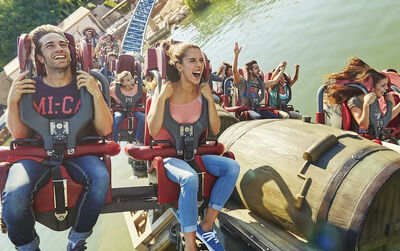
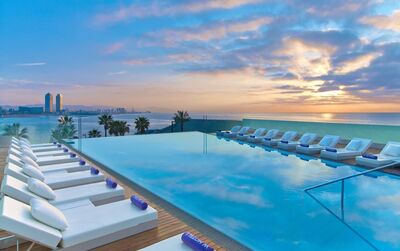
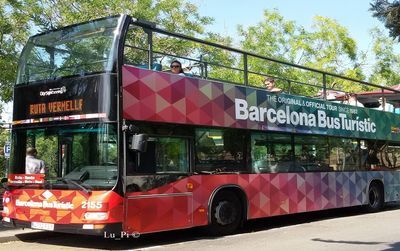
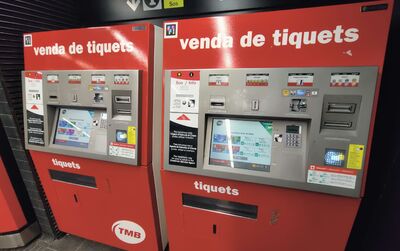
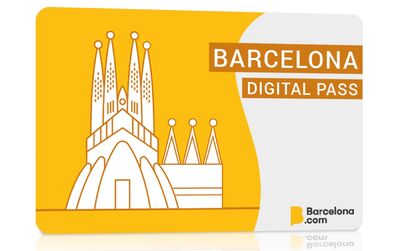
2 comments
Music and dance festivals Costa Brava - Émilie (8 Feb 2013 - 09:00)
Hello!
I just wanted to add that talking about festivals, a great particularity of Costa Brava is all its little festivals of traditional/world music that take place in all the cities of the cost.
Last year I went to one, called 6th International Folk Festival, in the city of Calella, and I really loved it! Good atmosphere, good music and a great variety of styles!
I was checking the possibilities for this year, and I saw they are organizing 5 festivals for this year, in the surroundings of Barcelona! Time to make great plans for the holidays...
I let you the link, if you want to check by yourselves:
http://www.rugatravelgroups.net/eventos/
Ciao!
Fête de la Catalogne espagnole - RAYPI (12 May 2012 - 15:45)
Il est dommage que la fête de la Catalogne ne soit pas stipulée, le 29 septembre, pour info !!